Welcome to the world of roll-up garage doors—you know, those nifty barriers that keep your treasured ’93 Corolla safe from the elements (and overly curious neighbors). Now, while it may seem like a piece of cake to just yank it down and call it a day, securing these bad boys is a bit more nuanced; that’s where the importance of knowing how to lock a roll up garage door comes into play.
It’s not just about keeping your garage contents snug as a bug; it’s about peace of mind, knowing your prized possessions (and that vintage band poster collection) are safely stashed away from prying eyes and opportunistic miscreants.
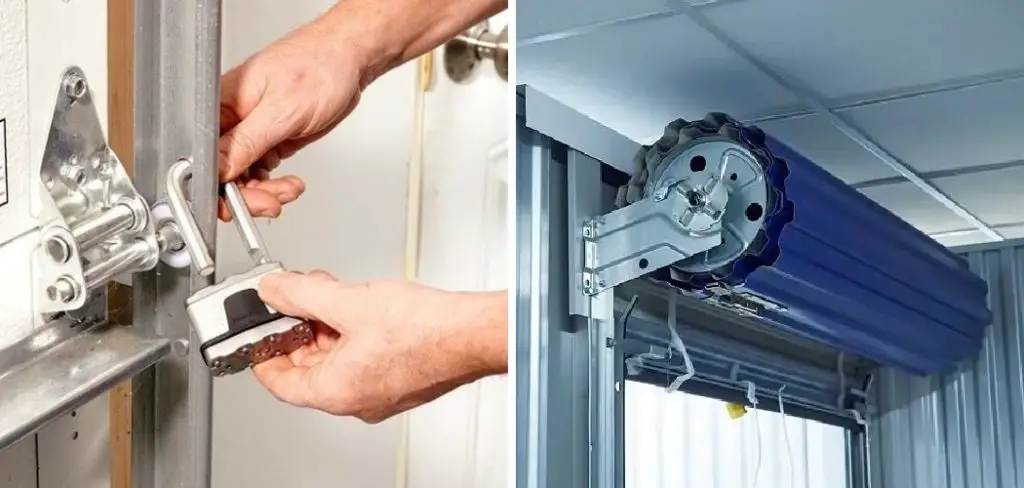
But wait, there’s more! Locking mechanisms for roll-up garage doors are about as varied as the flavors at your local gelato spot. From manual latches that make you feel like a medieval gatekeeper to high-tech gizmos that lock with the elegance of a spy movie, understanding these options is crucial.
This guide aims to walk you through the ins and outs of these mechanisms, ensuring that by the end, you’ll be a veritable Houdini of garage security. Now, ready to learn how to lock a roll-up garage door like a pro? Strap in; it’s going to be an enlightening ride!
Identify the Locking Mechanism
Alright, folks, it’s time to turn on your inner detective because we’re about to seriously examine your garage door. Think of it as a “Where’s Waldo?” but for locks and latches. You’re not just looking for anything that turns or clicks; you’re on a quest to uncover the mysteries of your roll-up garage door’s existing security features.
A. Examine the Garage Door for Existing Locks or Latches
Grab your flashlight and channel your inner Sherlock Holmes because it’s time to inspect every inch of that roll-up door. You’re looking for any existing locks or sneaky latches that might already be part of the setup. Sometimes, they hide in plain sight, and other times, they’re more elusive than the plot in a telenovela.
B. Determine the Type of Roll-Up Door (Manual or Motorized)
Next up, is your garage door more old-school cool with a manual vibe, or does it have the bells and whistles of a motorized marvel? This is crucial intel because the garage door type dictates the locking mechanism you’ll need. Manual doors might have you flexing a bit more muscle, while motorized ones could see you becoming besties with your remote.
C. Note Any Specific Features or Components Relevant to Locking
And finally, keep your eyes peeled for any unique features or components that could affect how you lock up. This could be anything from external brackets to hidden compartments that might be perfect for a secret handshake… or, you know, a lock.
This step of our garage door adventure is all about the details, folks. The better you know your door, the better you’ll be at picking the perfect lock to keep your treasures tucked away safely.
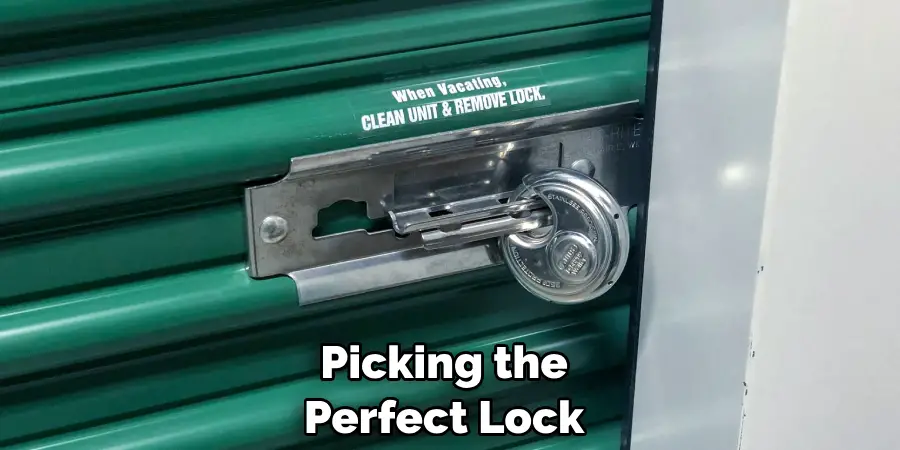
How to Lock a Roll up Garage Door: Manual Roll-Up Garage Door
Alright, brave homeowners, it’s time to tackle the manual roll-up garage door. You don’t need robotic arms or AI for this; just good old-fashioned human ingenuity and a bit of elbow grease. Securing your garage is about to get seriously hands-on, so roll up those sleeves!
A. Slide the Locking Bar into Position
First, you’re on a hunt for the elusive locking bar—a piece of metal about to become your new best friend.
- Locate the Locking Bar on the Inside of the Door: This step is a bit like finding Waldo, except Waldo is a piece of metal in a vast sea of… more metal. Look for a long bar that’s just waiting to fulfill its destiny on the inside track of the door.
- Insert the Locking Bar into the Track or Bracket: Once you’ve made your acquaintance with the locking bar, it’s time for a little intro to its home—the track or bracket. Slide it in like you’re slipping a letter into a mailbox. A mailbox that protects all your earthly possessions that is.
B. Secure the Locking Bar
Now that you’ve installed the locking bar, it’s time to ensure it’s not going anywhere.
- Push the Locking Bar Fully into Place: Give it a good push, as if you’re pressing the last piece of a puzzle into place. This isn’t the time for a gentle touch – make sure it knows who’s boss.
- Ensure the Bar Fits Snugly Against the Door Track: Wiggle it a bit. Go on, give it a jiggle. We want that bar to be snug as a bug in a rug. You’re not doing it right if it’s even a smidge loose.
C. Test the Locking Mechanism
Alright, time for the moment of truth. Will your manual endeavors keep the bad juju out? There’s only one way to find out.
- Attempt to Lift the Door from the Outside: Approach the door from the outside, pretend you’re a cartoon villain for a sec (complete with a villainous chuckle), and try to lift that door.
- Verify that the Door Remains Securely Closed: If the door doesn’t budge, congratulations! You’ve officially locked up tighter than a drum. If it lifts, maybe go back to step one and try again, champ.
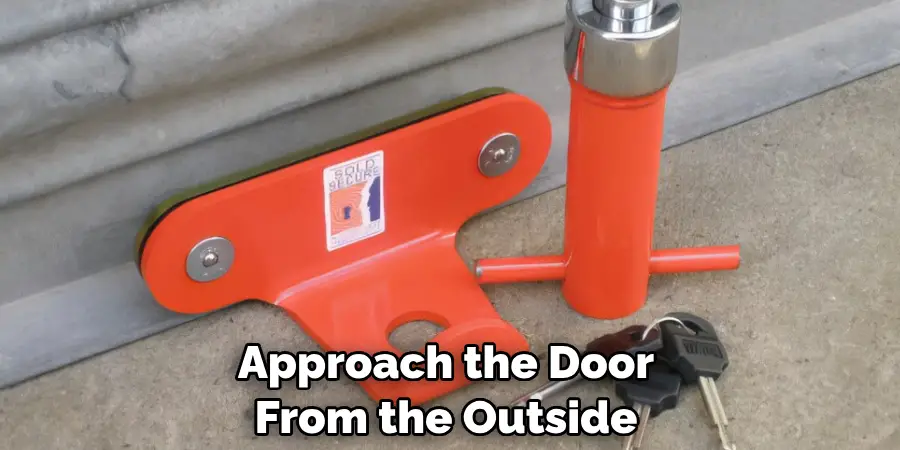
And there you have it, folks! Your manual roll-up garage door is now a veritable fortress or at least a slightly more intimidating barrier than it was before. Give yourself a pat on the back, and maybe don’t quit your day job to become a locksmith just yet.
How to Lock a Roll up Garage Door: Motorized Roll-Up Garage Door
Alrighty, for those of you with the James Bond of garage doors (that’s motorized, for the uninitiated), it’s time to dial up the security with some tech-savvy and good old-fashioned ingenuity.
A. Engage the Automatic Locking Feature (if available)
- Activate the Locking Feature from the Control Panel or Remote: Picture yourself as a superhero, cape flapping in the wind, as you reach for your control panel or remote. With the push of a button, you’re activating the fortress mode. No cape? No problem. Feel free to improvise with a bath towel.
- Wait for the Door to Lock Automatically: This is the part where you twiddle your thumbs, watch paint dry, or perform an interpretive dance as you wait for the almighty click of the automatic lock engaging. Congratulations! Your garage is now as secure as a bear’s honey stash.
B. Install Additional Security Measures
- Attach a Padlock or Hasp to the Bottom of the Door: For an added layer of “Keep Out,” why not throw a padlock or hasp into the mix? It’s like telling potential intruders, “Seriously, you’re not getting in, so don’t even try.”
- Use a Keyed Cylinder Lock on the Door Track: This move is akin to upping the difficulty from “beginner” to “expert” level on a video game for would-be burglars. A keyed cylinder lock on the door track is your level-up in garage security.
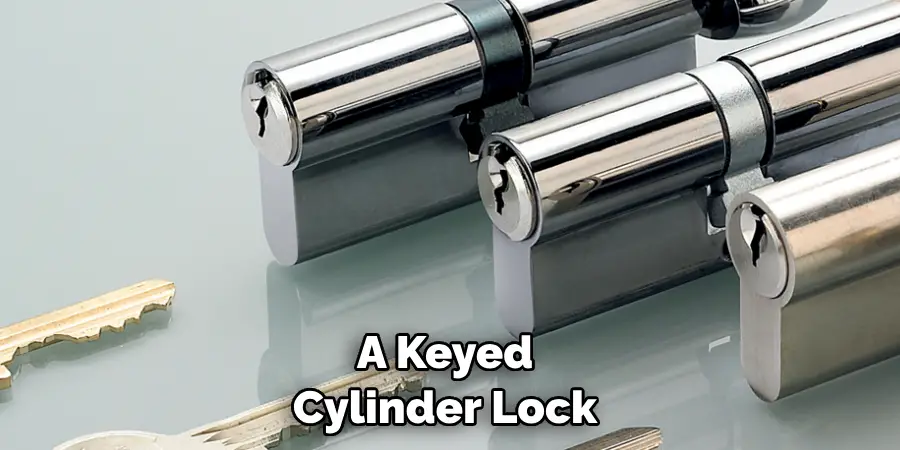
C. Activate the Security System (if applicable)
- Arm the Garage Door Security System from the Control Panel: This is where you get to say, “System, arm,” in your best secret agent voice. Even if your system is voice-activated or not, it’s fun to play the part, right?
- Ensure All Sensors and Alarms are Functioning Properly: Give your sensors and alarms a quick once-over to make sure they’re all awake and alert. It’s like conducting a roll call for your security gadgets – “Sensors? Present. Alarms? Loud and clear!”
And voilà! With these steps, your motorized roll-up garage door isn’t just smart; it’s practically a member of Mensa. You’ve now got a more secure garage than Fort Knox and just about as welcoming to thieves as a skunk at a lawn party.
Regular Maintenance and Inspection
Alright, folks, here we are at the part of our garage door saga where we talk about upkeep. Yes, I know, maintenance is about as thrilling as watching paint dry, but stick with me. It’s crucial for keeping your fort Knox… I mean, the garage is in top-notch condition.
A. Check Locking Mechanisms Regularly for Wear or Damage
First up, we’ve got the not-so-glamorous task of eyeballing those locking mechanisms. Regular checks are like giving your door a mini health check-up. You’re looking for any signs of wear and tear or damage. Think of it as playing detective, except the most exciting thing you might uncover is a rusty lock.
B. Lubricate Moving Parts and Components as Needed
Now, onto the lubrication – and no, we’re not talking butter on toast. This is all about ensuring those moving parts are as smooth as a jazz saxophone solo. A bit of lubricant goes a long way in keeping everything operating smoothly. Just imagine you’re pampering your garage door, giving it the spa treatment it so richly deserves.
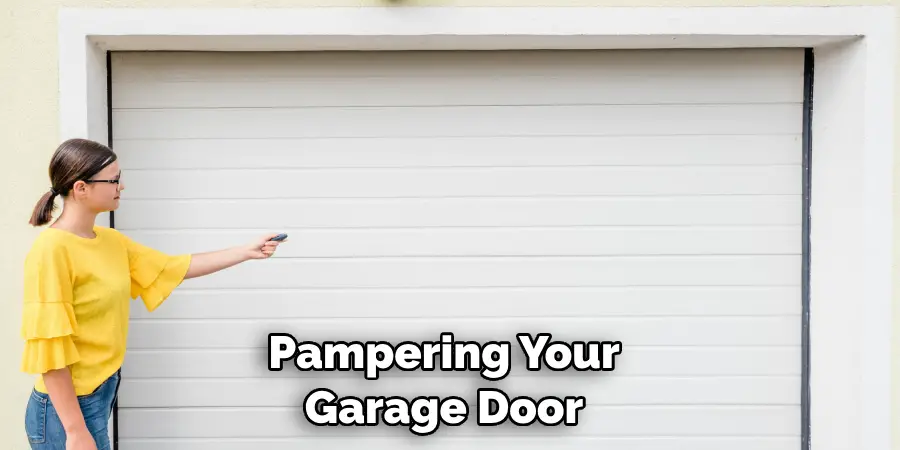
C. Repair or Replace Any Faulty Locks or Latches Promptly
Last but not least, we have the repair or replacement step. If any part of your locking mechanism looks like it’s seen better days (think more “zombie apocalypse” than “shiny and new”), it’s time to take action. Whether you’re channeling your inner DIY hero or calling in the cavalry (aka the professionals), make sure you sort it out with the urgency of fixing a wifi outage.
And there you have it! Regular maintenance and inspection, while not the most exciting of tasks, are key to ensuring your garage door remains your home’s trusty guardian. Plus, it gives you a solid excuse to hang out in your garage more often, and who doesn’t want that?
Security Considerations
Alright, buckle up because we’re about to get into the nitty-gritty of keeping your garage as secure as a squirrel’s nut stash. It’s all about being the secret agent of your own driveway, folks.
A. Keep Keys or Access Codes Secure and Confidential
First up on our spy agenda is making sure your keys or codes are more guarded than grandma’s secret cookie recipe. Seriously, don’t go blabbing your access code at every neighborhood BBQ. If you wouldn’t share your online banking password, then your garage code should be just as VIP.
B. Install Motion-Activated Lights or Security Cameras Near the Garage Door
Next, let’s talk about turning your driveway into the Las Vegas Strip—not with neon lights, but with motion-activated ones that scream, “I see you!” to anyone sneaking around. And why stop there? Throw in a security camera or two, and you’ve got yourself a reality TV show starring would-be intruders.
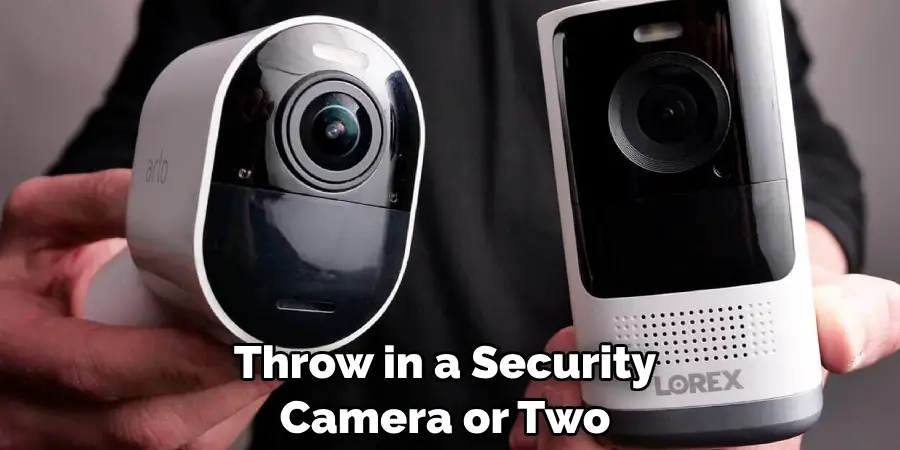
C. Consider Using Smart Home Integration for Remote Monitoring and Control
Lastly, for those of you who like to be in control, like a puppet master, but for your house, smart home integration is your new best friend. Imagine being able to glare at your garage door from your phone and say, “Yeah, you better stay closed,” or getting alerts faster than you can swipe left on your ex’s Instagram story. Now that’s power, folks.
And voila! You’re not just keeping your garage safe; you’re basically fortifying your own mini-castle. Remember, a little paranoia can be a good thing when it comes to security. Plus, it’s always fun to play secret agent, right?
Frequently Asked Questions (FAQs)
Q: Can I Use Peanut Butter as A Lubricant for My Garage Door?
A: While peanut butter is great for sandwiches and the occasional midnight snack, it’s not quite up to the task of lubricating your garage door. Stick to using actual lubricants designed for garage doors unless you want to attract a neighborhood of squirrels.
Q: How Often Should I Be Doing These Maintenance Checks?
A: Ideally, you should give your garage door a once-over every six months or so. It’s like a dental check-up, but instead of looking for cavities, you’re on the hunt for rust and rogue squirrels nesting in your locking mechanisms.
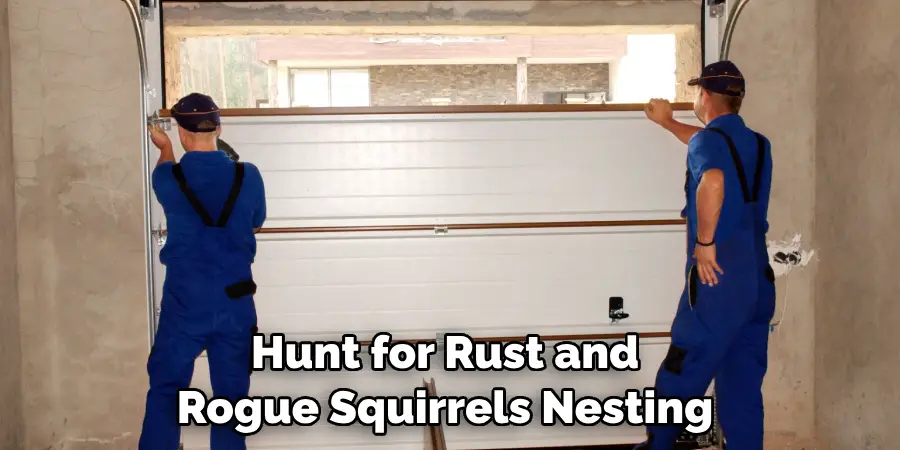
Q: What if I Actually Like the Idea of My Garage Being More Welcoming to Thieves – Like a Social Experiment?
A: While we admire your commitment to social science, we’d strongly recommend against turning your garage into a ‘thieves welcome’ zone. If you’re looking for excitement, maybe try bungee jumping instead – it’s safer.
Q: Is Talking to My Garage Door Security System Weird?
A: Absolutely not! In fact, we encourage it. Giving your security system a pep talk or a goodnight kiss can only strengthen your bond. Just don’t expect it to talk back; if it does, that’s an entirely different FAQ.
Q: What’s the Deal with The Motion-Activated Lights? Won’t that Just Highlight My Embarrassing Driveway Dance Moves?
A: Only if you’re lucky! Think of it as your nightly opportunity to shine, literally. Plus, if your moves are particularly impressive, would-be intruders might just think twice about messing with such a talented individual.
Q: Can I Use Other Types of Smart Home Integration for My Garage Door?
A: As long as it doesn’t involve talking to plants or time-traveling appliances, go for it! Smart home integration can be a game-changer when it comes to managing your garage door security. Who needs keys when you have a voice-activated garage door opener? Just remember to keep your passwords and access codes safe and secure.
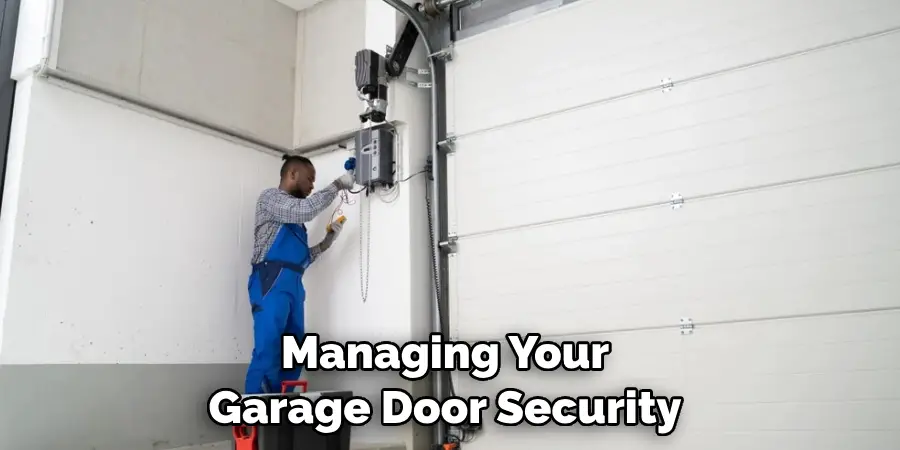
Conclusion
Alright, team, we’ve made it to the end of our epic “how to lock a roll up garage door” adventure. It’s been a wild ride, full of highs, lows, and a surprising amount of talk about locks and security systems.
We started by waiting for that sweet automatic lock to click, threw in some heavy-duty padlocks for good measure, and leveled up with a keyed cylinder lock. For the tech-savvy among us, we armed our garages with the latest in security systems, ensuring nothing gets past those sensors or alarms without a proper grilling.
But remember, folks, a secure garage is a well-loved garage. Regular maintenance, such as checking those locks, greasing those wheels, and replacing anything that looks like it belongs in a horror movie, is key. Throw in some motion-activated lights and a camera or two, and you’ve got yourself a fortress.
In closing, we wish you all the enhanced security and peace of mind that a properly locked garage door can bring. May your belongings stay safe, your locks stay shiny, and your garage door becomes the envy of secret agents everywhere. Here’s to living that ‘Fort Knox’ life, one roll-up garage door at a time!
